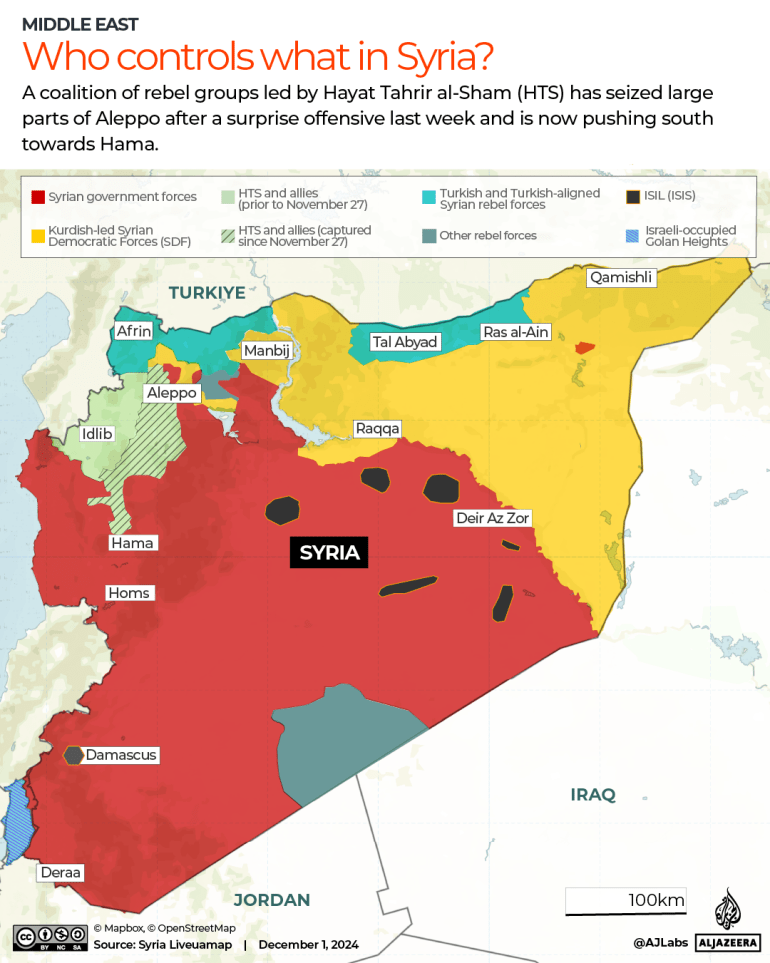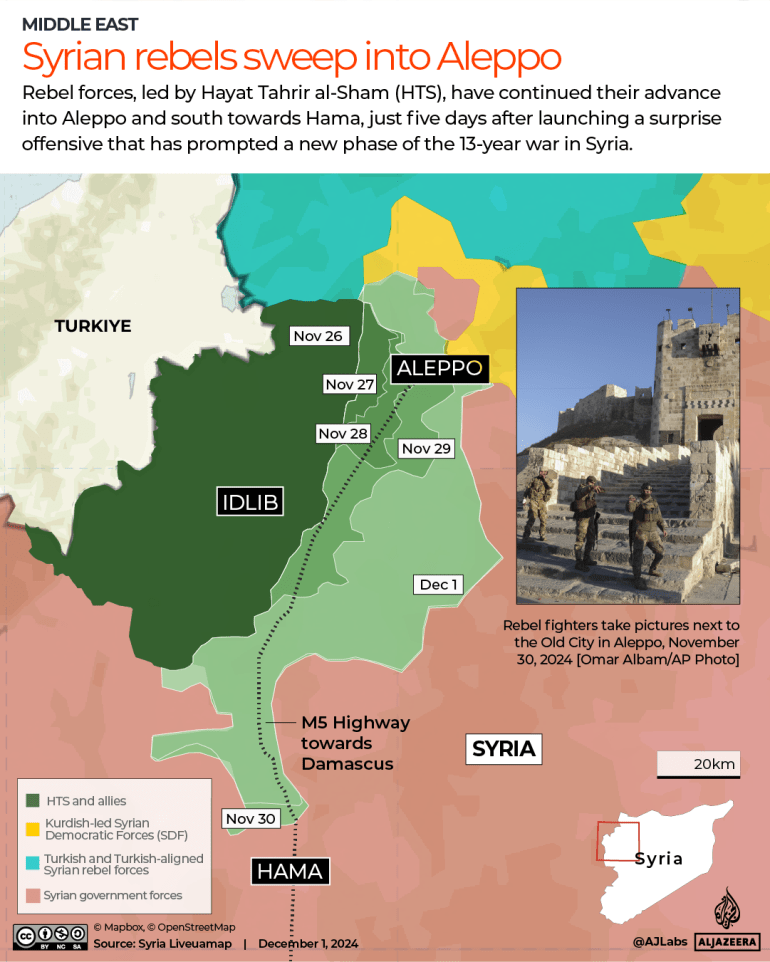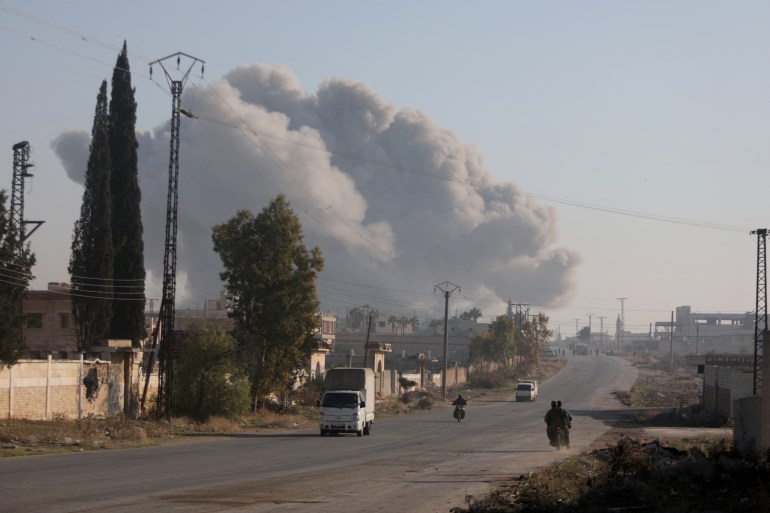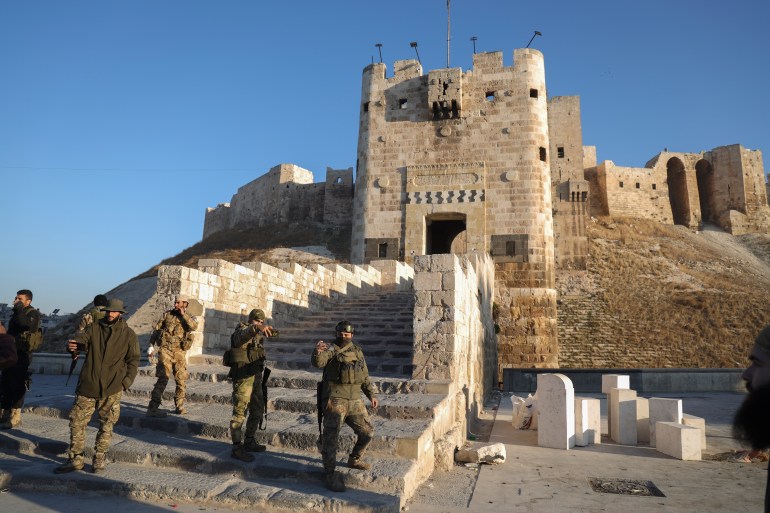Rebels led by Hayat Tahrir al-Sham seize control of large parts of Aleppo, one of Syria’s largest cities.
Rebel forces, led by Hayat Tahrir al-Sham (HTS), are advancing into Aleppo and south towards Hama, just five days after launching a surprise offensive that may have sparked a new phase of the 13-year war in Syria.
Syria’s military announced a “temporary troop withdrawal” on Saturday from Aleppo, the country’s second largest city, saying it would regroup in preparation for the arrival of reinforcements for a counterattack.
President Bashar al-Assad’s forces had controlled Aleppo since 2016 with support from Iran, Russia and Hezbollah after a brutal air campaign by Russian warplanes helped al-Assad retake the city of about two million people.
Who controls what?

Four main groups are competing for control on the ground in Syria. They are:
- Syrian government forces: The army, the government’s main military force, fights alongside the National Defence Forces, a pro-government paramilitary group.
- Syrian Democratic Forces: This Kurdish-dominated, United States-backed group controls parts of eastern Syria.
- HTS and other allied rebel groups: The HTS is the latest iteration of the al-Nusra Front, which had pledged allegiance to al-Qaeda until it severed those ties in 2016.
- Turkish and Turkish-aligned Syrian rebel forces: The Syrian National Army is a Turkish-backed rebel force in northern Syria.
How the offensive unfolded
On Wednesday, the day a ceasefire between Israel and Lebanon came into effect, Syrian opposition forces, led by HTS, launched an offensive from their base in Idlib governorate in northwestern Syria.
The rebel group says the attacks are retaliation for recent Syrian government assaults on cities in Idlib, including Ariha and Sarmada, which resulted in civilian casualties, including the deaths of children, and aim to deter future attacks on the rebel stronghold.

The operation marked the first major attack against al-Assad’s forces in the region since the 2020 Idlib ceasefire, brokered by Turkish President Recep Tayyip Erdogan and Russian President Vladimir Putin.
By Wednesday evening, the group had seized at least 19 towns and villages from pro-government forces, including military sites, as they pushed into western Aleppo governorate.
The Syrian regime responded by shelling rebel-held areas while the Russian air force carried out air strikes.
By Thursday, the rebels had captured more territory and expelled government forces from villages in eastern Idlib, then began pushing towards the M5 highway, a strategic road that leads south to the capital, Damascus, about 300km (186 miles) away.
By Friday, rebel forces had entered parts of Aleppo city after detonating two car bombs and engaging government forces on the city’s western edge, according to a Syrian war monitor and fighters. Syrian state television said Russia was providing Syria’s military with air support.

By Saturday, images and videos began circulating online showing rebel fighters taking photos next to the ancient Citadel of Aleppo as they advanced through the city.

After capturing Aleppo, the rebels advanced south, but there are conflicting reports about whether they have reached the central city of Hama.
The opposition announced an effort to expand safe areas and allow displaced civilians in Idlib to return to their homes in recently “liberated” territories.